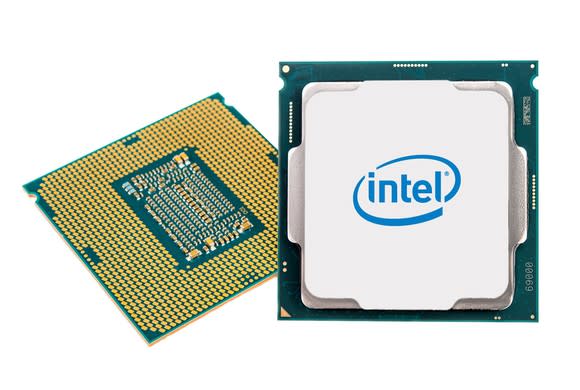Intel Corp. Needs Better Manufacturing Leadership
At Intel's (NASDAQ: INTC) November 2013 investor meeting, then-manufacturing chief Bill Holt gave a detailed presentation in which he aimed to assure investors that its lead in chip manufacturing technology over its competitors was set to either stay large -- at more than three years ahead -- or even continue to expand.
In fact, Intel claimed that it would go into production on its 10-nanometer technology -- which the chipmaker said would be a full generation ahead of competing 10-nanometer technologies in terms of transistor technology and chip density -- in 2015.

Image source: Intel.
Intel also said that competing (and, per Intel, inferior) 10-nanometer technologies would go into production in early 2017.
Holt was right about one thing: Intel's main manufacturing competitors did, in fact, begin mass producing chips on their own 10-nanometer technologies in early 2017. Today, most high-end smartphones include chips manufactured using such technologies.
What he wasn't right about was when Intel would go into production on 10 nanometer. It didn't go into production in 2015 as expected, nor did it go into production in 2016, and based on all the information that's publicly available, the vast majority (if not the entirety) of Intel's processor volume shipments in 2018 will be based on the company's 14-nanometer technology.
Something has clearly gone very wrong with the company's 10-nanometer technology, and I think it's time that Intel makes significant management changes in its chip manufacturing organization, known as the Intel technology and manufacturing group (TMG), to try to get back on track.
Management's fault
To be clear: The situation that Intel's manufacturing group has landed itself in isn't the fault of the hard-working engineers within the organization. Engineers are generally skilled individuals that ultimately work on what they're told to work on by their superiors.
The fault, then, ultimately lies with the management within Intel's TMG.
Perhaps the engineers were told to build technologies on too aggressive of a timeline for the kinds of human and financial resources that they'd be given to work on those technologies. Indeed, while Intel has continued to boost its research and development spending year after year, maybe Intel's manufacturing group wasn't given enough money to keep the development of multiple generations of cutting-edge chip manufacturing technologies on track.

Image source: Intel.
Alternatively, Intel's management may have been unrealistic about the viability of certain technologies and techniques chosen for a particular technology generation, or maybe tried to incorporate too many difficult-to-implement technologies into a technology generation at once.
The point, though, is that it was the job of Intel's manufacturing group to deliver on the commitments that it made both publicly as well as privately to its product development teams and its customers, and the group has now failed to deliver not once (14 nanometer was late to initial production and even later to being good and economically viable), but twice.
Moreover, these delays appear to have significant knock-on effects on future technologies. Were the development processes of Intel's manufacturing technologies truly independent, then issues and delays with one technology generation wouldn't really impact the following generations.
However, considering that Intel's 10-nanometer technology has gotten what essentially amounts to an entire second development cycles' worth of attention and still isn't ready for mass production, it may be the case that the failures of the current TMG management team will reverberate for years, if not decades, to come.
Intel must act now
At this point, Intel's best chance at getting back on track is to remove the current top leadership within TMG and replace them with experienced outsiders from the company's major competitors.
Such new executives will be able to look at the situation with fresh sets of eyes, make better decisions about future technology generations, and potentially even reshape the workings of the organization to deliver better results at a faster pace.
However, new management for TMG will only go so far. Intel seems to be kowtowing to its shareholder base by publicly committing to rein in spending as a percentage of revenue. CEO Brian Krzanich and CFO Bob Swan need to have the courage and the foresight to give TMG the resources that it needs to deliver upon its objectives, even if that leads to a short-term hit to profitability.
Chip manufacturing technology development is still one of Intel's most important capabilities, but if the company can't get it together and ultimately deliver on the promise that leadership has tried to sell investors on for years, it may be in its best interests to throw in the towel and shift its business over to a better-run third-party chip manufacturing company.
More From The Motley Fool
6 Years Later, 6 Charts That Show How Far Apple, Inc. Has Come Since Steve Jobs' Passing
Why You're Smart to Buy Shopify Inc. (US) -- Despite Citron's Report
Ashraf Eassa owns shares of Intel. The Motley Fool recommends Intel. The Motley Fool has a disclosure policy.
